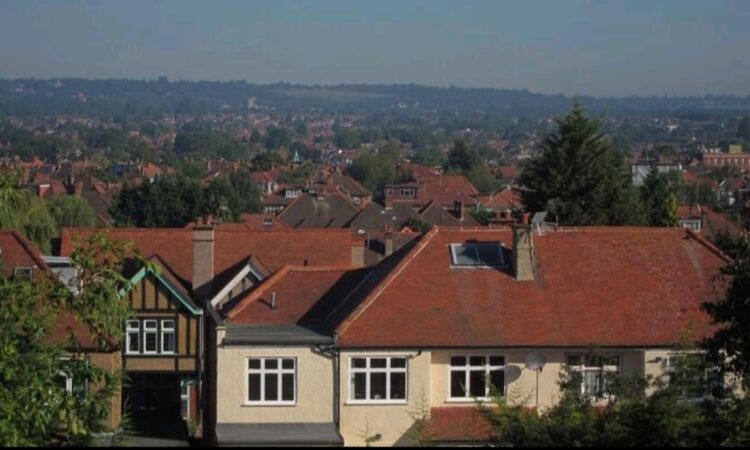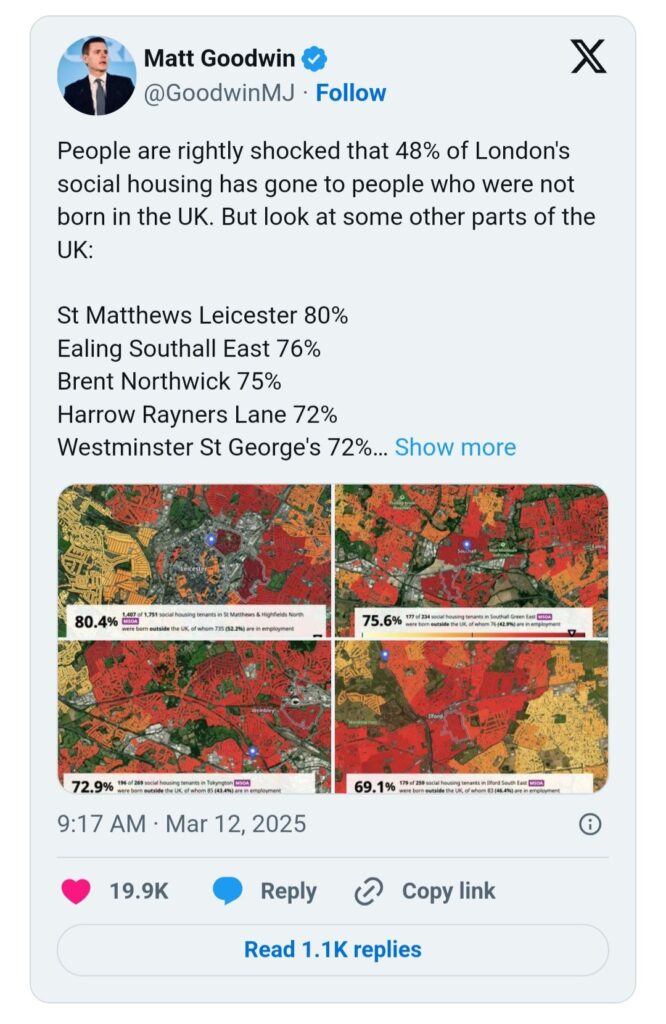
More than half of social housing in 16 areas across the UK has been allocated to migrants, according to new data. The information was compiled by Matt Goodwin, a political commentator and professor at the University of Kent, using figures from local authorities and the Migration Facts website.
He described the findings as deeply concerning, stating that in many places, the majority of social housing is going to people who were not born in the UK.
He also pointed out that many of these individuals are not contributing to the system through employment, which adds to the strain on public resources.
The demand for social housing in the UK far outweighs supply, with over a million households currently on waiting lists.
Despite the UK having one of the largest social housing stocks in the world, making up 16.7 percent of the housing sector and more than double the EU average of 7.5 percent, the shortage remains a pressing issue.
The gap between available housing and the number of applicants continues to widen, making access to affordable homes a growing concern for many citizens.
In Leicester, the neighbourhoods of St Matthews and Highfields stand out, with over 80 percent of social housing residents being born outside the UK and only 52 percent currently employed. Other areas with high proportions of migrants in social housing include Southall Green East in Ealing, where 75 percent of social housing occupants are non-UK nationals, with only 43 percent in employment.

Similar figures are seen in Northwick and Wembley in Brent, Rayners Lane in Harrow, St George’s in Westminster, Spinney Hill in Leicester, and Plashet West in Newham, where the percentage of social housing occupied by migrants is above 70 percent.
The UK government is attempting to address the crisis by launching what it describes as the largest home-building initiative in a generation. Through the Planning and Infrastructure Bill, the government plans to remove bureaucratic barriers in the planning process, making it easier to construct new homes.
The National Housing Federation has welcomed these reforms, calling them an essential step in tackling the problem. Chief Executive Kate Henderson emphasized the urgency of providing stable housing for the thousands of children currently living in temporary accommodation.
However, doubts remain over the feasibility of the government’s housing targets. Deputy Prime Minister Angela Rayner has pledged to build 1.5 million homes across the UK within the next five years, but industry experts are skeptical.
The Commons Housing, Communities and Local Government Committee has suggested that constructing 370,000 new homes per year until 2030 is highly unlikely. Further concerns have been raised about staff shortages in local authority planning departments, which could delay the approval of new developments.
Anna Clarke, director of policy and public affairs for the Housing Forum, which represents councils, housing associations, and developers, has suggested that while the government’s goal may be unrealistic in the short term, the target of 1.5 million new homes could potentially be met by 2035 if the right measures are put in place.





